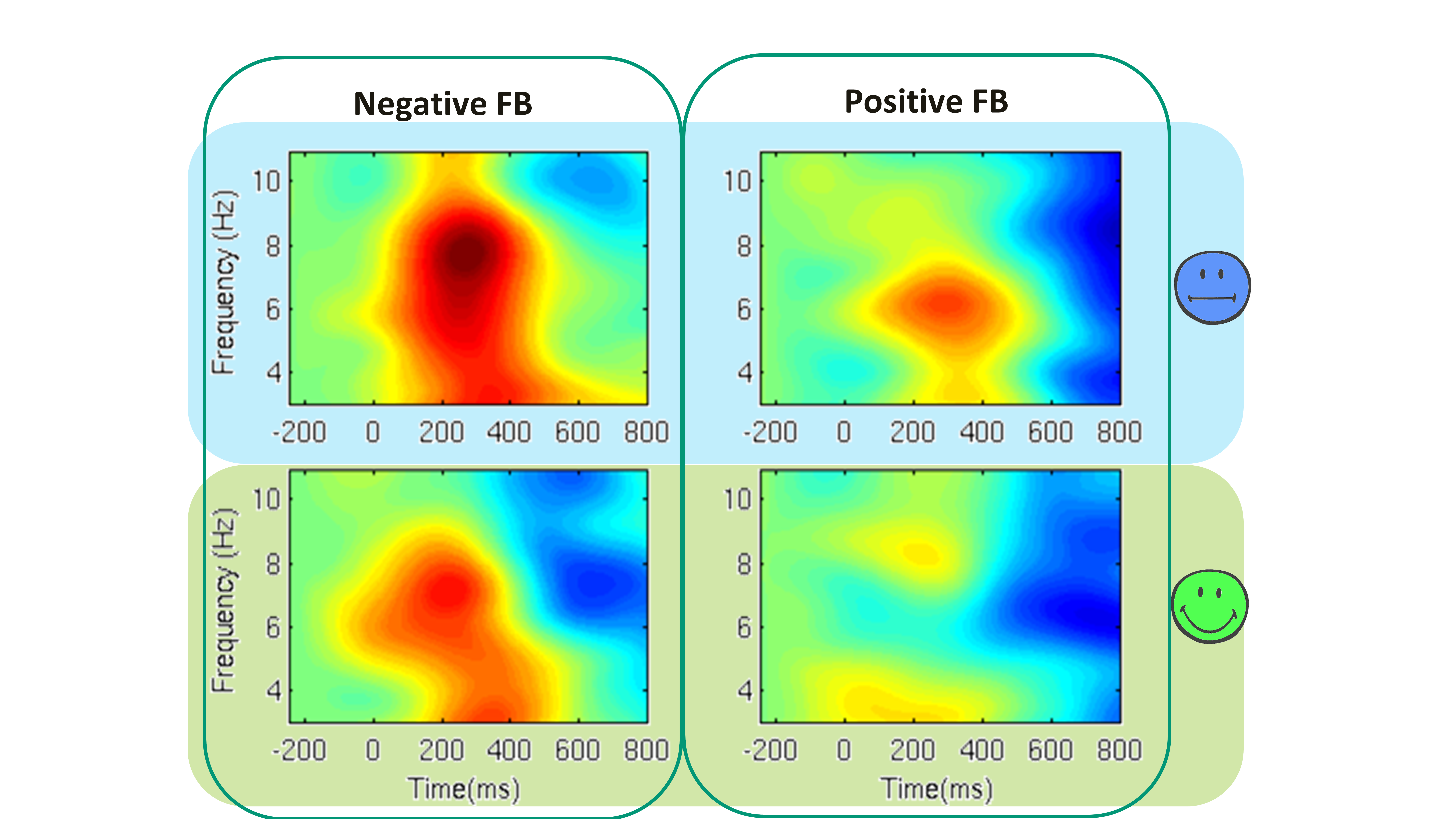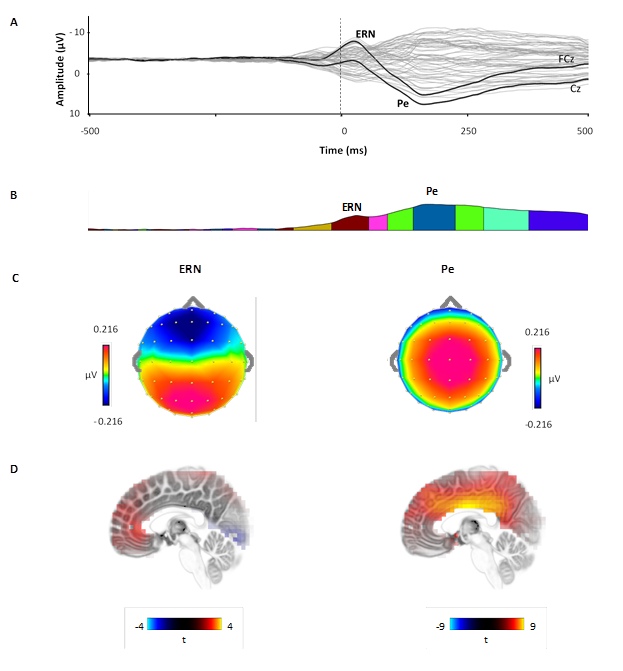We use extensively scalp EEG (either 64 or 128 channels montage) in our research and in the cap-lab. EEG povides a time-resolved neurophysiological technique enabling to explore the time-course and organisation of a myriad of cognitive processes (here with a focus on either attention or performance monitoring), with a millisecond time resolution. We mostly use regular event-related brain potentials (ERPs) that correspond to phase-locked and time-locked neural events (population level), obtained after averaging. The focus is either on stimulus processing, or response/decision making. Recently, we have also started to use complementary time-frequency analyses that provide another important source of information given that the scalp EEG signal is first transformed in the frequency domain (using a fourier transform for example) before the averaging across trials takes place. This allows to capture induced effects, and not only evoked ones.
ERP components time-locked to the onset of evaluative feedback (revealing the FRN component)

Time-frequency decomposition (3-11 Hz) of EEG signal in response to evaluative feedback (revealing mid frontal theta power increases)

Topographic ERP mapping analysis (whereby the ERP waveforms are analysed at the spatial level/topography, before the brain generators underlying the dominant topographies are revealed using source localization methods)

© 2016| Design door RedBit.be